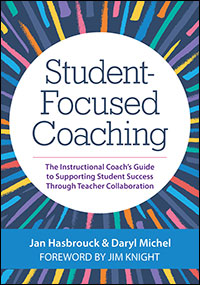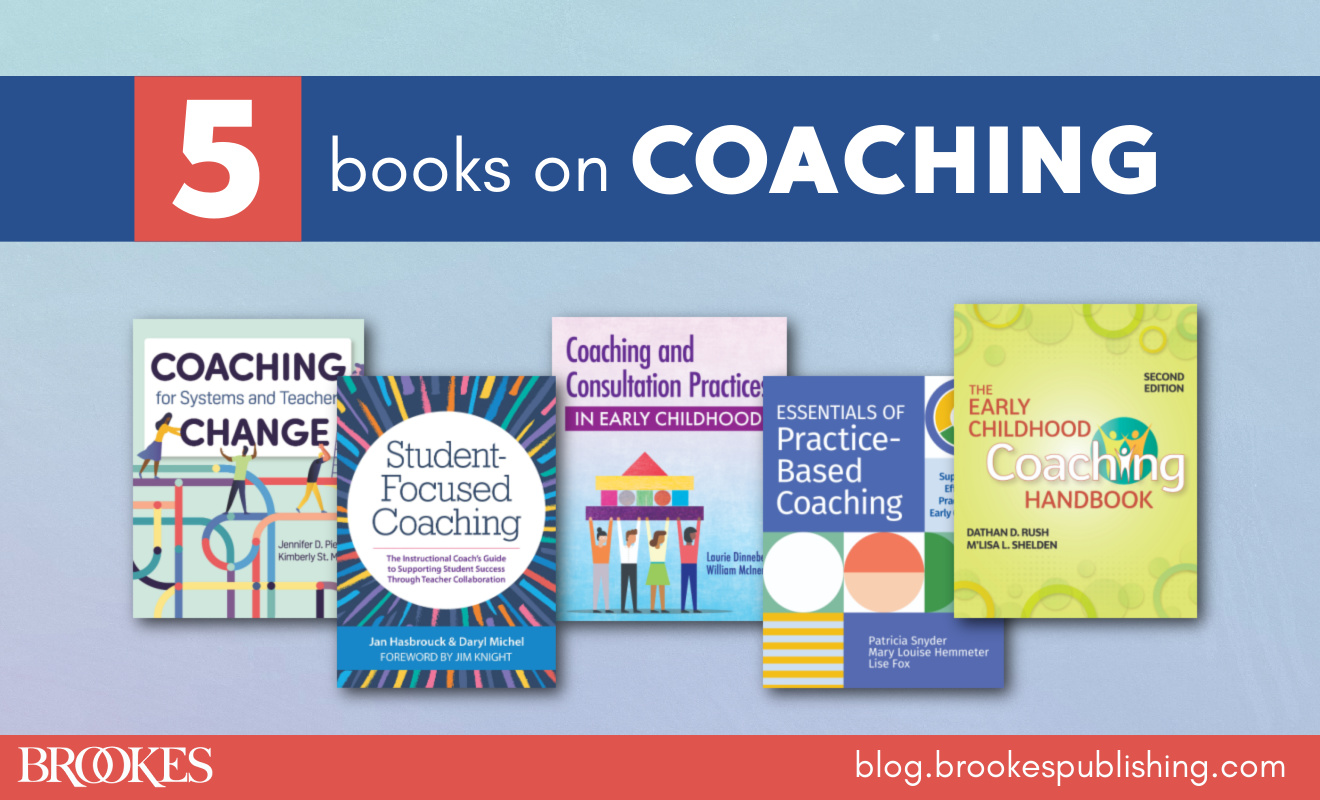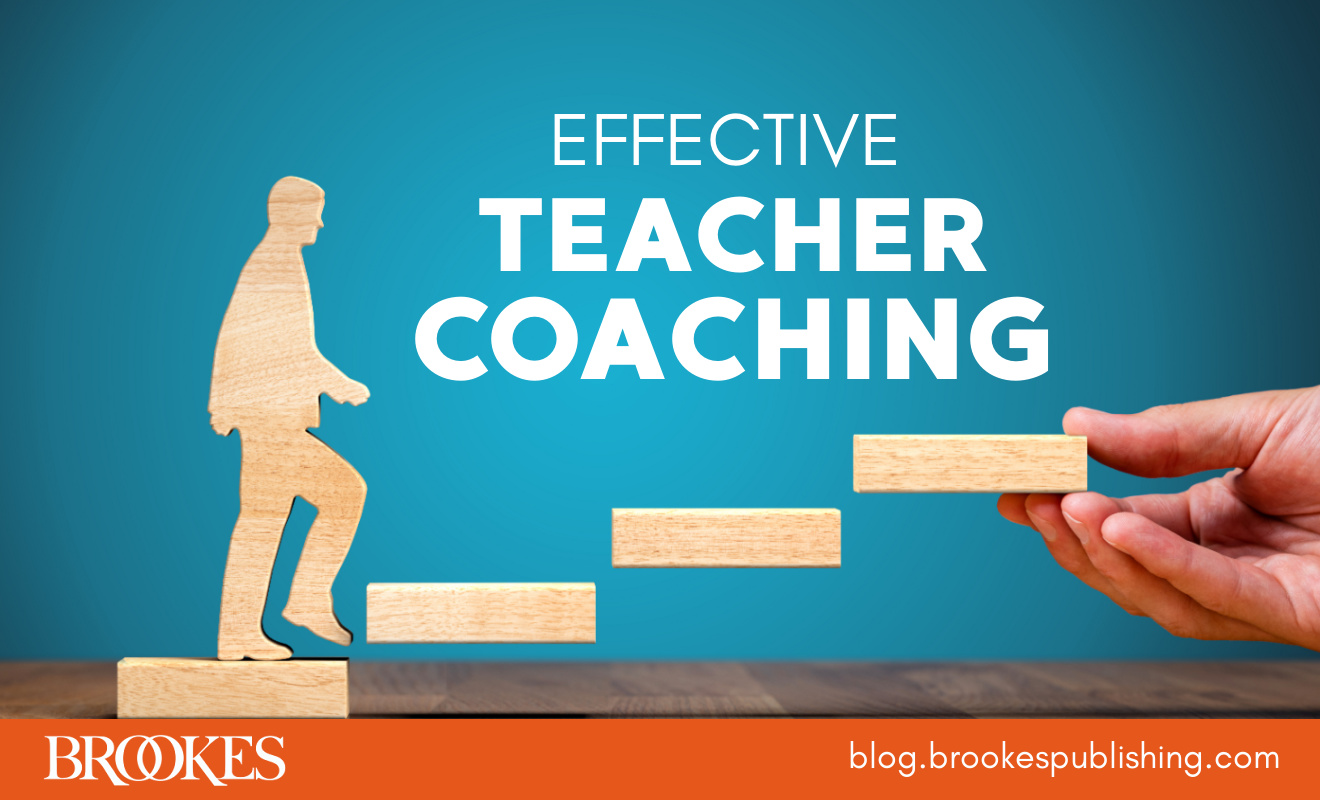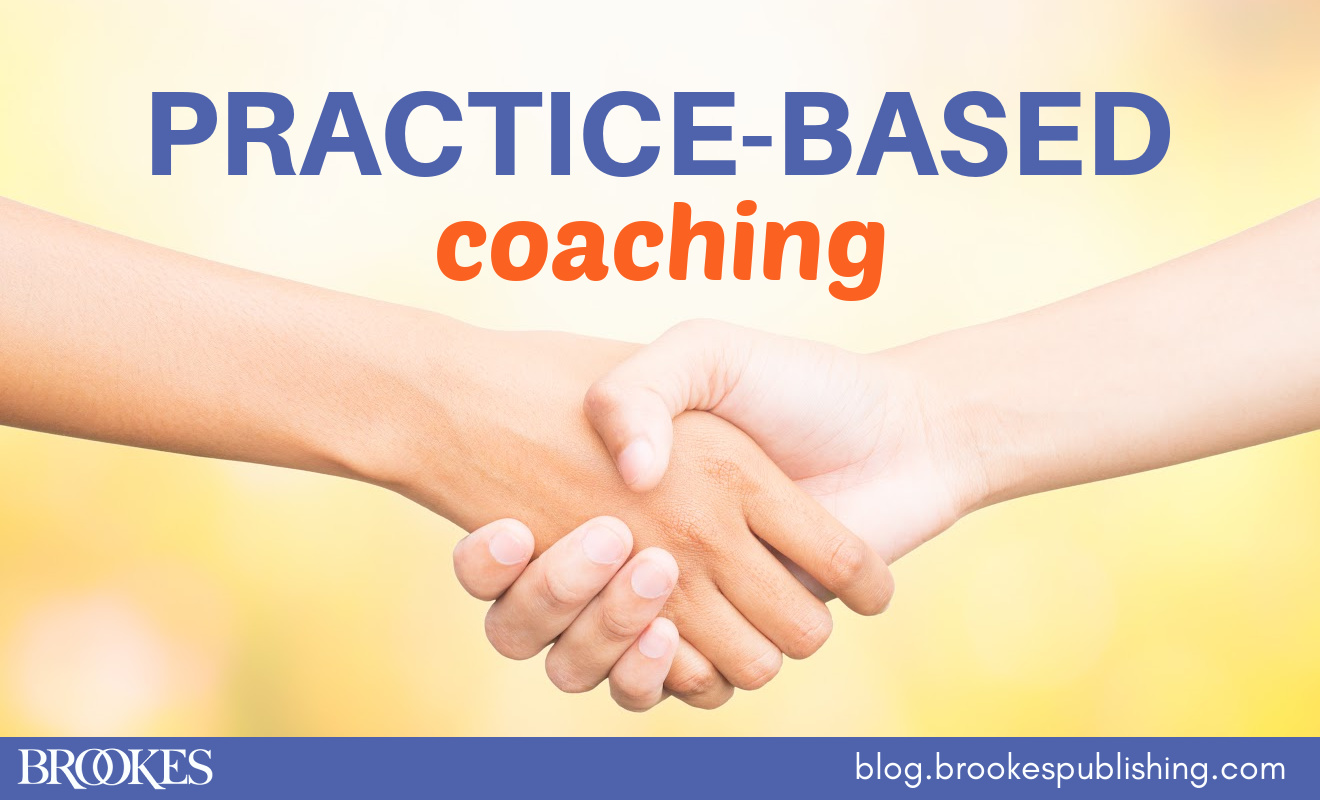What Is Student-Focused Coaching? 4 Key Goals Every Instructional Coach Should Start With
September 7, 2023
 Today’s blog post is excerpted and adapted from Student-Focused Coaching by Jan Hasbrouck and Daryl Michel: a one-stop, step-by-step guide to instructional coaching in K–12 schools using the research-based SFC model.
Today’s blog post is excerpted and adapted from Student-Focused Coaching by Jan Hasbrouck and Daryl Michel: a one-stop, step-by-step guide to instructional coaching in K–12 schools using the research-based SFC model.
Student-focused coaching (SFC) is a cooperative, ideally collaborative, professional relationship with colleagues mutually engaged in efforts that help maximize every teacher’s knowledge and skills to enhance student learning. There are a lot of important words included in that sentence, and all are essential to understanding SFC. In this post, we break down the definition into its key parts and clarify why each one is such an important goal.
Enhancing Student Learning
Let’s start with the last four words of the definition, because this is the focus of our work: to enhance student learning. As you may have experienced, coaching can sometimes seem complex and even intimidating to provide (and at times unpleasant to receive). Coaching can sometimes feel awkward and uncomfortable when, for example, you are coaching a veteran teacher who has more experience than you. Another challenge coaches face is working with colleagues who have a different philosophy about teaching or a negative attitude about some students or families.
You’ll find that not every teacher is eager to work with you in your coaching role. At these times, it helps to keep in mind that coaching is not about you, and it is not about your colleagues.
Bottom line, coaching is about the students.
Sure, the coach works directly with teachers to help them implement effective instruction, but the only reason coaches care about making that happen is because coaching ultimately benefits students. Keeping students’ needs at the heart of your coaching can help you during those inevitable moments of discomfort or awkwardness to refocus on that essential purpose of SFC—coaching is about the kids.
Building Professional Relationships
Professional relationship is another key phrase in our definition of SFC. Coaching cannot occur outside of some kind of professional relationship. When you work with other teachers as a coach, you may have the opportunity to work with someone who is, or may become, a personal friend. More often, you may be working with a colleague (or administrator/supervisor) you barely know. At times—we hope they are rare—you may even find yourself working with a person with whom you have a tense, uncomfortable relationship.
When awkward moments happen, take a deep breath and remember that coaching is about the students and not about making friends or having a good time with a fellow teacher. All of us who have taken on a coaching role sometimes need to find a way to get past our own personal discomfort and resolve to complete the hard work despite differences. Work on communication and relationship-building skills that will help you start and maintain professional relationships and deal with the inevitable challenging moments. (Student-Focused Coaching includes specific suggestions and strategies for developing these skills.)
Focusing on Cooperation and Collaboration
Coaching must be based on a relationship that is, at minimum, cooperative. This is a key point: You cannot provide coaching services to someone who does not want to cooperate with you. Coaching is simply not possible in those situations. If working with a coach is not a voluntary process, then it becomes something more like supervision than coaching.
Ideally, by engaging in effective SFC coaching with a colleague, you can help change a minimally cooperative relationship into one that is at some point fully collaborative, in which you and your colleague are:
- equally involved
- equally trusting
- equally respectful of each other’s skills, knowledge, and experience
- equally committed to helping students.
We often talk about starting with a small spark of cooperation that can ultimately build into a roaring bonfire of collaboration. See Student-Focused Coaching for a complete introduction to the SFC Collaborative Problem-Solving Process, specifically developed to help build a collaborative professional relationship while addressing students’ needs.
Aiming for Mutual Engagement
When the SFC definition refers to mutually engaged, we are underscoring the fact that the SFC process is not directive or top-down, with the coach trying to “fix” the teacher or make teachers do anything. In fact, we often remind our SFC coaches of this reality: Coaches have no power and no authority.
That statement is often met with both concern and relief. What we mean by this phrase is that coaches are no more powerful than their peer colleagues; they are teachers, not administrators, who are working in a different role. Instead of providing direct services to students, coaches partner with teachers to assist them with providing the best possible instruction and support to every student.
Now that you have a clear definition of student-focused coaching and an understanding of its goals, how can you get started with implementing this approach to enhance learning? The book Student-Focused Coaching is a great place to start—it gives you a complete guide to the three key roles of coaching and offers tons of practical activities and materials, including application exercises, reflection exercises, virtual coaching tips, and 20+ pages of downloadable forms.




Write a Comment
Your email address will not be published. Required fields are marked *
Post a Comment